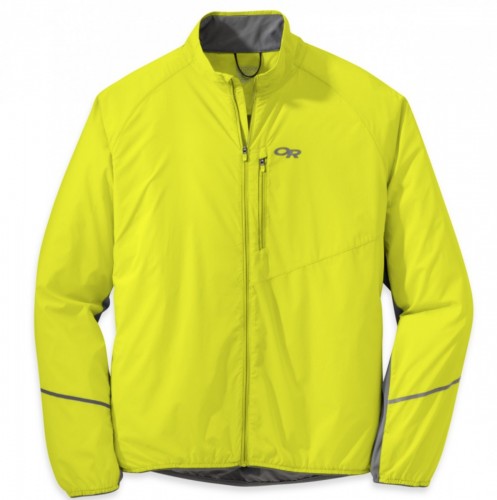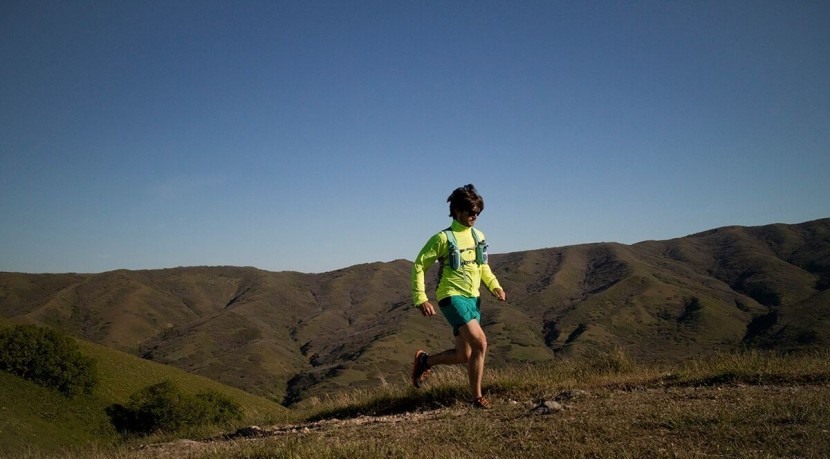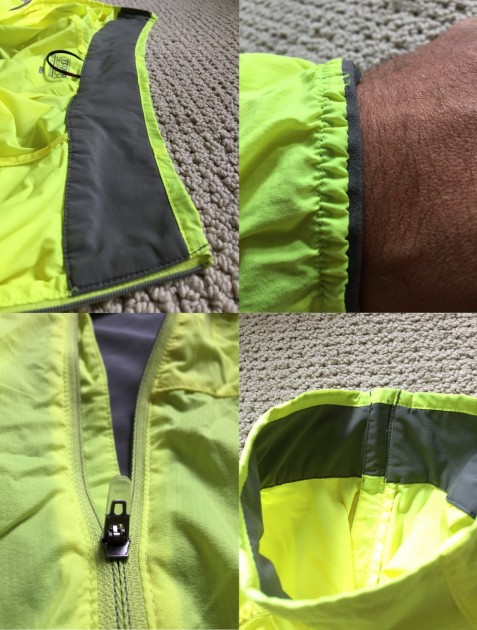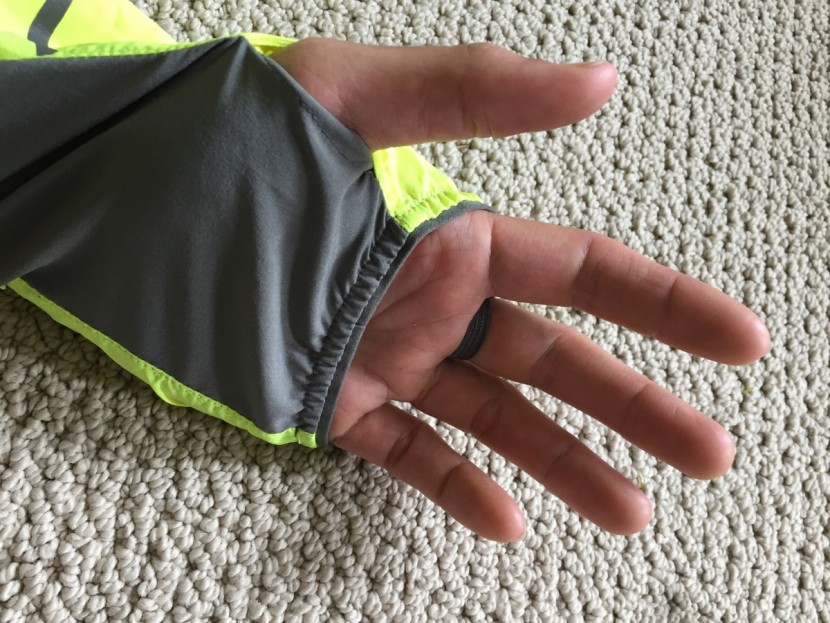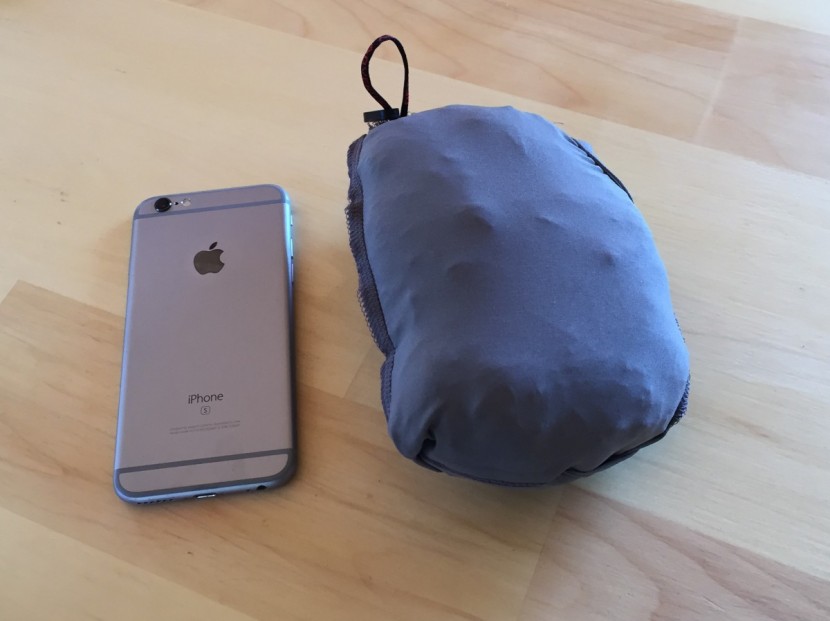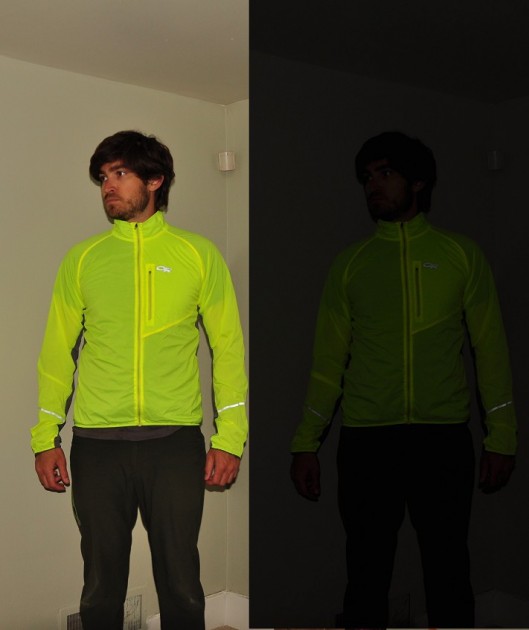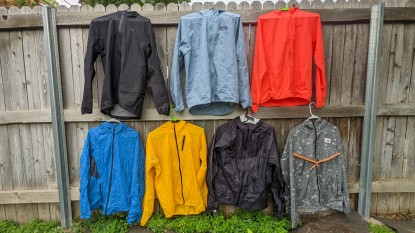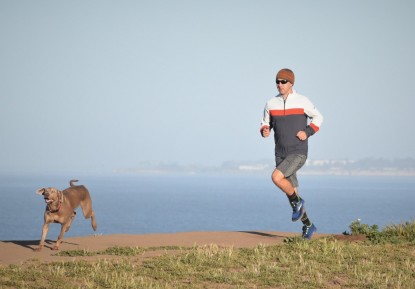Outdoor Research Boost Review
Our Verdict
Our Analysis and Test Results
In a world where overpromising and under delivering seems to be the norm, the Outdoor Research Boost is a pleasant surprise. OR has gone against convention with their 2017 design. Instead of sacrificing breathability with the hopes of creating a more weather resistant running jacket, they have gone back to the drawing board. They designed a jacket that has protective water-resistant panels where the drizzle hits you, and highly breathable panels where your body perspires and vents heat. You get the feeling that this jacket was born from innovation, testing, feedback and more testing.
Breathability and Venting
Our Editors' Choice winner represents a benchmark in breathability and venting. We gave the Boost 10/10 in the breathability department. Our expectations for breathability were far exceeded. The weatherproof panels are made from 100% nylon 20D mechanical stretch ripstop body, while the venting panels are made from a woven blend of 86% polyester and 14% spandex 90D stretch material. This mix of materials in strategic placement gives the Boost a colossal advantage in breathability over the competitors in this review.
We found that even on prolonged uphill runs where most jackets had to be adjusted, unzipped, or removed because of excessive heat and moisture buildup, the Boost performed. On our most recent stress test of the OR Boost, we ran from our neighborhood to the summit of Little Black Mountain just outside Salt Lake City in cold, windy, sunny conditions. We gained nearly 3000 feet of leg burning elevation and committed to keeping the jacket on and zipped. Having previously worn the Boost on uphill endeavors we weren't extremely surprised to find that there was no desire to adjust or remove the jacket. Unfortunately, this was the only jacket of the nine that was capable of doing this. Jackets such as the Brooks LSD and Salomon Agile, and others had rudimentary venting when compared to the OR Boost. The results really were dramatic. The fact that we could complete long runs and not remove or alter the Boost stuck with us.
On the contrary, it shielded us from the wind and dumped our excess heat keeping our temperature well regulated. Although it wasn't a specific test in our review the wearable temperature range of this jacket eclipsed all others. From chilly morning runs with frost on the grass to the warmer days where running in a t-shirt was just a tad too cold this jacket kept us comfortable and dry. One of our favorite attributes of the Boost was when we did remove the piece it was because we were genuinely warm and not because of excess moisture building up in the jacket.
Weather Resistance
Upon first viewing, our instinct was that the Boost wouldn't perform in the weather resistance category. The material that comprises the stretch panels under the arms and the entire mid to low back isn't DWR treated and isn't water resistant.
The placement of these panels is the key to this jacket's functionality. As we ran through intermittent rain and drizzle in this jacket we discovered that the areas other jackets let water through (seams on shoulders, forearm seams, and zippers) the OR didn't. As with every jacket tested in this review, the DWR doesn't stand up to heavy rain. It just isn't made for that type of protection. We felt that this jacket did an excellent job keeping the light rain and drizzle off and when the heavy rain came down this jacket dried extremely fast when it cleared up. The Arc'teryx Incendo offered slightly superior weather protection.
We had similar concerns with the wind and cold protection in this jacket but similar to the weather resistance metric, the jacket's design and materials excelled. While this isn't a wind jacket it did remarkably well keeping us comfortable during the downhill road bike test in rather cold conditions. Something we were constantly reminded of while running in this jacket was the wide range of temperatures where it remains comfortable. From chilly morning runs with frost on the grass to the warmer days where running in a t-shirt was just a tad too cold, this jacket kept us comfortable and dry.
Comfort and Mobility
The real test of comfort and mobility is being able to concentrate on your run, the surroundings, maybe even the music you're listening to instead of having to adjust or alleviate discomfort from your jacket. The OR Boost represents another benchmark in our testing. We found this jacket to be even more comfortable and forgiving than the previously worshiped Arc'teryx Incendo. There are a plethora of small details, as well as big picture fit details that combine to make one hell of a jacket. Outdoor Research describes the Boost as having a “trim” fit. We found the medium size to be spot on. It wasn't painted on but also not baggy. There was no restriction in arm movement while at rest or moving. Both the weather-resistant nylon panels and stretch panels accommodate movement. This was the only jacket in the group that had any stretch and it went a long way in improving comfort.
A seemingly small detail that pays huge dividends is how meticulously OR protected any point where the material of the jacket could potentially contact skin and chafe. The elastic wrist cuffs, elastic waist, inner lining of the neck, and zipper were all given a buffer to keep these points from rubbing mile after mile.
The Boost also comes equipped with thumb holes and even an index/middle finger loop to keep your jacket properly positioned when putting gloves on. All of these things together, the relaxed fit, seams that are buffered with soft material, and thumbholes keep the jacket where it belongs and lets you focus on other things.
To top it all off, the large venting panels are pleasantly stretchy. We never had the feeling that our movement was being restricted by the Boost. The jacket moved in coordination with us throughout our tests, even riding our bike downhill for the wind resistance test. Several jackets felt uncomfortably tight with arms outstretched or overhead.
Portability
This was the only category of our testing regime that the Boost came in below first or second in the ratings. This isn't to say that the Boost's portability isn't good. It just means that other companies have found slightly better solutions to the portability problem. The storage system consists of stuffing the jacket into the larger of the two back pouches.
The jacket packs and unpacks effortlessly, but once it's packed it is bulkier than its higher ranking competitors like the Arc'teryx Incendo, Patagonia Houdini Pullover, and Montane Featherlite (all of which have excellent storage systems). The packing problems don't end there. There is also an attachment point that reveals itself once the Boost is tucked away in its pocket. The attachment point itself isn't reinforced and broke with a fairly light tug. The plastic clip that is attached to the loop is also flimsy and difficult to use, especially if you have larger hands as the clip is microscopic. These flaws mark some of the only deductions we noted for this jacket.
We found several positives in dealing with the portability of the Boost. At 5.5oz, it isn't exactly heavy; as far as ease of packing and deploying goes, it ranked right at the top. We found not having a zipper as part of the packing system to be a bonus. Packing and unpacking with gloves or cold hands was an easy task, whereas doing the same activity with a zipper involved could be quite frustrating.
Day and Night Visibility
We found these visuals to be self-evident. That all jackets are not created equal, sometimes they are not endowed by their designer with any nighttime reflective blazing and instead given dull daytime colors that blend into the shrubs you are emerging from. This was NOT the case with the Boost. As soon as we pulled this jacket from its amnion into the world and cut the tag off we knew it had broken the mold for day and night visibility. We had the feeling that it was sent here to protect us from harm and to shield us from city drivers too concerned with their mobile phone to care about the life of the runner crossing the street.
We were sent the jolt/pewter color scheme for the boost and we're happy about it. Even if the Boost wasn't given reflective stripes on the arms and back, we still feel like it would have adequate nighttime visibility at least if you have the jolt colored fabric. That being said, it does have reflective accents at several points around the jacket, though they aren't as impressive as some of the brighter blazings we saw on the Arc'teryx Incendo and the Nike Impossibly Light jackets.
Best Applications
This jacket is THE all-arounder. We found the OR Boost to be equally suited for urban marathons and mountain ultras. Breathability is this award winner's strong suit. Charging up steep, never-ending hills is no problem for the Boost. We found ourselves to be the weak point when the OR was on.
Value
While offering the best performance of all jackets tested, it remained below the top three in price. The Boost is an incredible value.
Conclusion
We love this jacket. When we finished the testing period for this new lineup of running jackets choosing the OR Boost as the editors choice was a no-brainer. It really was a dark horse, appearing in 2017 from a company that doesn't specialize in running apparel to take the title. The OR Boost pairs visibility, portability, incredible comfort, with breathability that we previously thought impossible in a weather resistant jacket. Quite simply put this jacket was impressive and we look forward to the future of running equipment coming from Outdoor Research. Cue the slow clap.


